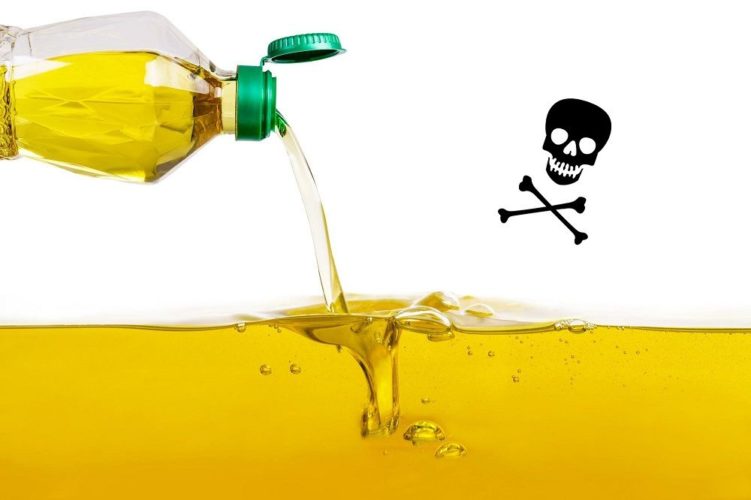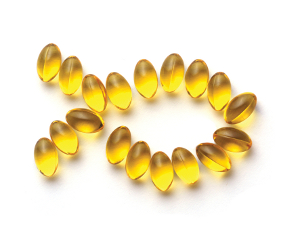The Damaging Effects of Unsaturated Fats

“Cancer cannot exist in the human body unless there are unsaturated fats in the diet.”
– Dr. Ray Peat
Unsaturated fats are one of the most toxic and damaging components of a modern diet, and the list of harmful effects from the consumption of polyunsaturated fats (PUFA) is vast.
As you’ll find out in this article, one of the primary reasons for PUFAs detrimental effects on health is the fact that they are extremely fragile molecules and prone to oxidation. Essentially, eating foods containing unsaturated fats is like downing a free radical cocktail that sets off a chain reaction of oxidation in the blood and also inside cells. The end result is increased amounts of toxic metabolites, like prostaglandins, which perpetuate stress and the release of more PUFA from tissues in a vicious circle.
PUFA also directly kill white blood cells, which are arguably the most important component of immunity, and their estrogenic effects effectively switch off thyroid function. Without thyroid, a high metabolic rate is impossible, and what you get instead is perpetual stress, which can lead to practically any symptom or disease you can think of.
In the words of Dr. Ray Peat:
“Saturated fats, and the polyunsaturated fats synthesized by plants, have very different effects on many important physiological processes. In every case I know about, the vegetable polyunsaturated fats have harmful effects on our physiology. For example, they bind to the “receptor” proteins for cortisol, progesterone, and estrogen, and to all of the major proteins related to thyroid function, and to the vesicles that take up nerve transmitter substances, such as glutamic acid. They allow glutamic acid to injure and kill cells through excessive stimulation; this process is similar to the nerve damage done by cobra venom, and other toxins.”
TABLE OF CONTENTS
Damaging Effects of Polyunsaturated Fatty Acids (PUFA):
Here are some of the long list of negative effects of polyunsaturated fatty acids:
- Blocks glucose from getting into the cell, thereby suppressing energy production
- Inhibits thyroid
- Wastes and consumes oxygen
- Metabolizes carbohydrates into fat
- Lowers blood sugar through increased insulin levels
- Destroys Vitamin E and thereby deteriorates brain, muscles and gonads
- Slows metabolic rate causing hypo-metabolic state (suppressed temperature and pulse)
- Increases estrogen levels, which contributes to increased clotting
- Creates hormonal imbalances
- Causes calcification/fibrosis of arterial walls
- Inhibits proteolytic enzymes in the gut leading to malnutrition and gut issues
- Suppresses Immune System
- Increases the Production of lactic acid at the cellular level leading to systemic inflammation
- Promotes gluconeogenesis and lipid peroxidation, thereby increasing the stress response in the body
- Promotes histamine production (inflammation, respiratory problems, mucus build-up)
- Accelerates aging and age-pigment (liver spots)
- Promotes the production of prolactin (which affects secretions, kidneys, gut, skin, causes excess mobilization of calcium from the bones, leading to osteoporosis), and the list goes on.
Temperature Dictates Fat Saturation
Whether or not a plant contains saturated or unsaturated fatty acids depends on the temperature in which it was grown – a fish in cold water would be stiff if it was made of saturated fatty acids, so the fat content in that fish remains unsaturated of necessity. A pineapple growing near the beaches on a tropical island will contain saturated fats (albeit a very small amount) because in that tropical climate, the plant would oxidize and die if it used unsaturated fats. The temperature in which the plant is grown dictates the fats used.
Similarly, if you consume fish that live in frigid, 35-degree waters of the Arctic, you’re eating a fat that is extremely unsaturated and assimilating it into your body. Since the human body is 98.6 degrees Fahrenheit and rich in oxygen, the result will be devastating as the fats oxidize, depleting your antioxidant reserves and causing damage throughout your body.
“Essential Fatty Acids” (Omega-3’s, 6’s, and 9’s):
 We are told that the body and brain need certain unsaturated fatty acids called omega-3’s, 6’s and 9’s. Is this a fact or have we once again been fed lies in the name of corporate profit and at the expense of our health?
We are told that the body and brain need certain unsaturated fatty acids called omega-3’s, 6’s and 9’s. Is this a fact or have we once again been fed lies in the name of corporate profit and at the expense of our health?
It’s clear that the less saturated a fat is, the less healthy and more damaging it is going to be in our bodies. The most delicate fats, most vulnerable to oxidation are the omega fats. According to Dr Ray Peat, “Alzheimers patients have much higher levels of these omega-3’s in the brain.”
Dr. Ray Peat speaks of the EFA misnomer, “Essential fatty acids are, according to textbooks, linoleic acid and linolenic acid and they are supposed to have the status of “vitamins” which must be consumed through diet to make life possible. However, we are able to synthesize our own unsaturated fats when we don’t eat the “EFA” so they are not “essential.” This term thus appears a misnomer.”
I think that in the future, the following statement will be common knowledge:
The less unsaturated fats in your diet, including the “Essential Fatty Acids”, the healthier you will be.
Sources of Unsaturated Fatty Acids
You may be surprised to hear where unsaturated fatty acids are found in foods. Here’s a list of foods to avoid:
- Nuts & Seeds
- Above-Ground Vegetables
- Grains & Legumes
- Vegetable Oils
- Fish Oils
Sources of Saturated Fatty Acids
The only real safe fats to consume are those of the highest saturation. Fats from pastured animals and from tropical plants are ones that are not going to oxidize in the body when eaten.
Coconut oil is the most saturated (safest) fat in all of nature. Grass-fed butter is a very healthy fat. Olive oil is comprised of about 10% PUFA, and is also high in antioxidants. A teaspoon or two a day of high-quality olive oil is safe to consume.
Tropical fruits contain a small amount of fats that are saturated so these are some of the safest fruits to eat. If you want to learn more about coconut oil, check out my article Coconut Oil: Miracle Medicine or Quack Treatment?
Conclusion
Vegetable oils and other commonly used unsaturated fats are extremely vulnerable to oxidation due to their chemical makeup. Unlike saturated fats, which are highly stable, unsaturated fatty acids are highly unstable prone to oxidation. When they oxidize, they breakdown into an assortment of toxic metabolites that can poison any cells and tissues they interact with.
Of all the fats in nature, omega-3 is the most highly unsaturated and has the potential to cause the most damage. I didn’t mention this in the article, but consider it as a bonus for those who have stayed with me to this point: It’s the gradual accumulation of these delicate fats within tissues of the body that is very likely the cause of aging itself.
Of all the things you can do to improve your health, throwing out all your liquid cooking oils and doing all your cooking with butter and coconut oil is one of the greatest changes you can make. I hope this article has been enlightening for you and that you’ve learned something new.
